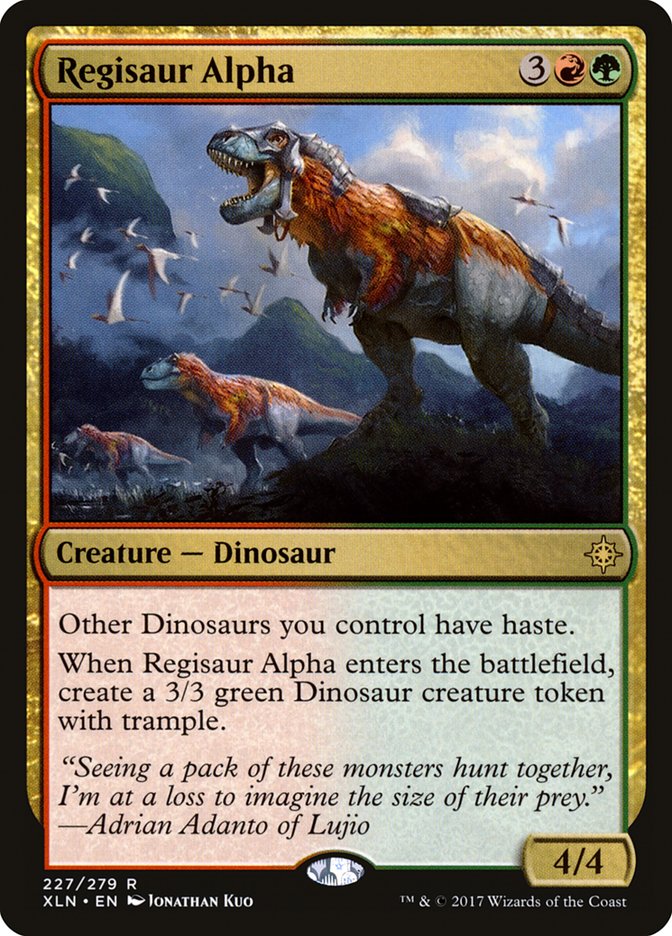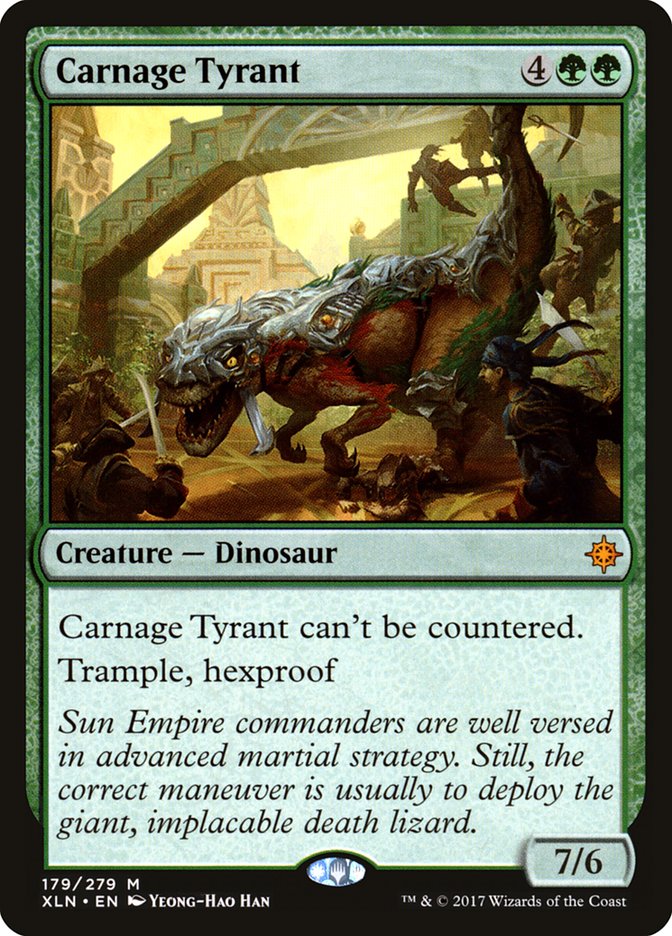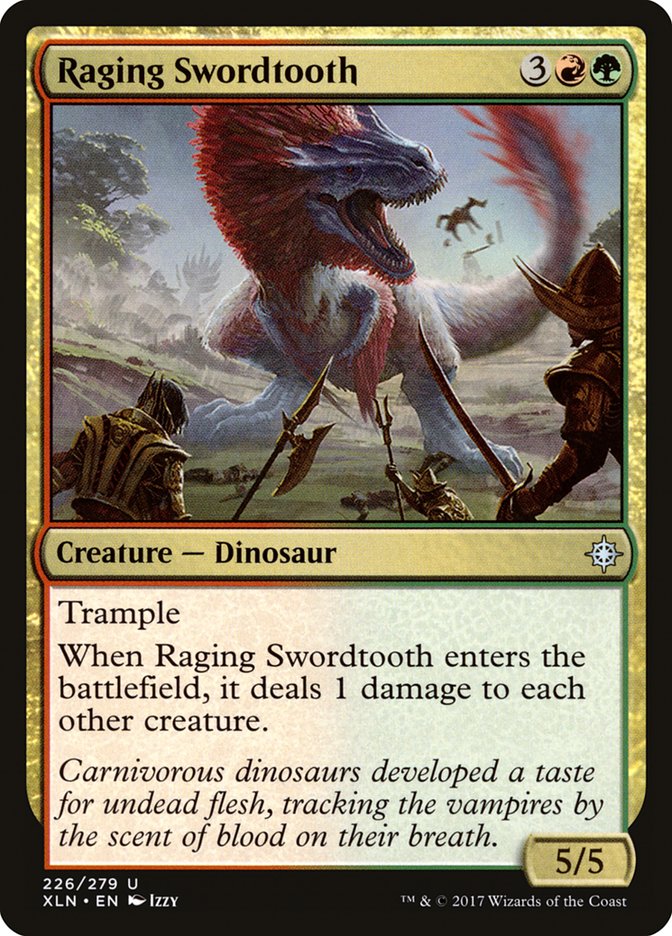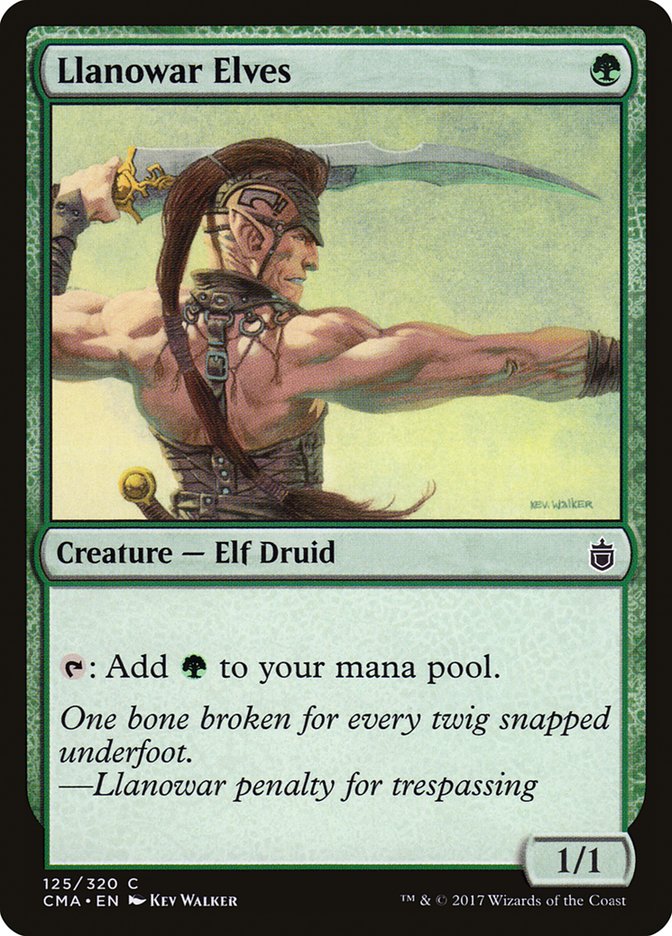Llanowar Elves and Birds of Paradise used to be staples of Standard. Year
in and year out we could rely on those cards to be in the core set and give
aggressive green decks a powerful start and clear identity. Whether they
were ramping into Call of the Herd, Troll Ascetic, or Thundermaw Hellkite,
they were competitive.
8th Edition shook things up when the players were forced to choose between
a reprinting of Llanowar Elves and Utopia Tree or Birds of Paradise and
Vine Trellis.
Yes, that’s an actual thing that happened. I’m still upset that Rewind beat
Dismiss, and can you imagine how much less people would complain about
Modern would be if Dwarven Miner had beaten Blood Moon and Static Orb had
beaten Ensnaring Bridge? Hindsight is 20/20.
If only…
Since that moment, devotees of mana creatures had to be content with a
single one-drop mana creature in Standard, with a few moments where two
were legal at the same time, though the combination of Avacyn’s Pilgrim and
Arbor Elf just wasn’t the same as the classics.
Then, with the rotation of Elvish Mystic, we were told that one-drop mana
creatures are simply too powerful to be evergreen in Standard, a flavor
fail for sure and a dagger through my heart. However, the reality is that
WotC was right. The games where Mono-Green Devotion or G/R Monsters had
Elvish Mystic were so much different than those without, and your win
percentage when untapping with it on turn 2 was too much to let stand. It
took a while for the power of mana creatures to be properly understood, and
it’s clear that they should only be allowed in Standard format with the
density of cheap removal needed to contain them.
Right now Standard is in such a place. After years of players decrying the
weakness of removal relative to creatures and other threats, complaints
which I found overstated in the first place, we now have a Standard format
with an absolute plethora of great removal options. Fatal Push is the best
removal spell printed in years, and Vraska’s Contempt is having a similar
impact on Standard the way Hero’s Downfall did during Theros Block.
Red has Magma Spray, Shock, Lightning Strike, Harnessed Lightning, and
Abrade to cover all your bases, blue has a solid suite of counterspells,
and white brings up the rear with a still fine slate that includes Ixalan’s
Binding and Baffling End. There are good sweepers ranging from Golden
Demise and Fiery Cannonade at the low end to Fumigate at the top, and even
some awesome sideboard options in Chandra’s and Liliana’s Defeat. Answering
threats is as easy as it’s been in years in Standard, which made for a
perfect environment to boost the threat side of the equilibrium and bring
back one of Magic’s most iconic cards in a set that is already dripping
with nostalgia: Dominaria.
For a long time, the plane of Dominaria was Magic. The universe has
expanded a ton in the last fifteen years, but for those of us who have been
around for a while (aka: are very old) this is what Magic was like when we
were fresh-faced and new to slinging spells. I didn’t catch on to the power
of Llanowar Elves until it was too late for Standard, but now I get to make
up for lost time, and I intend to do that as quickly as I possibly can. So
while I have to play Modern this week at SCG Cincinnati, my mind has been
drifting to Standard and how best to utilize an attacking Mox Emerald.
The Power of Mana Creatures
Before I get into a few potential homes for the card, I want to go over
exactly why Llanowar Elves and cards like them are so powerful. When Elvish
Mystic was taken out of Standard I saw a lot of people arguing that it
wasn’t too powerful and the real issues with Standard were the overpowered
midrange threats. I also felt compelled to put Jonathan Rosum on blast
after it came out that he doesn’t afford mana creatures the respect they
deserve.
As a community, our analysis of tempo has come a long way in the last
twenty years. Card advantage is a much more overt resource to keep track
of. For the most part you can simply count the relevant resources and
compare those numbers, and cards that gain card advantage are pretty
obvious in doing so. Of course, you always have to adjust for the relative
power level of those cards, but that’s getting beyond the point.
Tempo is a much more nebulous concept to understand and track over the
course of a game. Even today we don’t have an agreed upon set of ways to
measure a tempo advantage over the course of a game. It’s one of those
things that you get a feel for and evaluate subjectively, though its
importance is well-established. We all know how valuable it is to curve out
and build our decks to do so as consistently as possible to punish
opponents who stumble.
It’s also well-accepted at this point that curving 1-3-4-5 is better than
2-3-4, at least enough to build your deck in a way to maximize mana
creatures. It’s at the middle of the curve where you get the biggest
increases in power level of threats so jumping ahead at those spots of the
curve provides a significant advantage.
What I think gets overlooked is just how much better a one-drop mana
creature like Llanowar Elves is than those at two mana. Sylvan Caryatid was
a format staple and added some things that Llanowar Elves doesn’t:
resilience against removal, defense against early aggression, and color
fixing, but it’s a much worse card on the balance. A similar argument could
be made for Servant of the Conduit as well. Why is that?
The obvious answer is that being able to deploy your threats starting on
turn 2 is that much better than casting them on turn 3. Llanowar Elves does
what Sylvan Caryatid does in allowing a four-drop to be cast on turn 3 and
a five-drop on turn 4, but only Llanowar Elves lets you cast a three-drop
on turn 2.
What this does is increase the ceiling of your deck’s potential without
reducing your floor by very much. The color fixing provided by most
two-drop mana creatures certainly aids in consistency but not by much, and
importantly, most of those creatures lower a deck’s floor via their
vulnerability to removal.
Trading evenly for two mana removal or behind on one mana removal makes
Servant of the Conduit and Drover of the Mighty a liability against many
cards while Llanowar Elves will never do worse than trading even on mana.
Also, being able to land a threat on turn 2 before many removal spells come
online puts your opponent in a bind. They have to make a decision as to
whether they want to stop the mana acceleration or protect their life total
by answering the more powerful threat.
Then there is the potential for double-acceleration draws. Starting on turn
2, your double acceleration draws don’t pay off until turn 4, which is the
turn that Vraska’s Contempt comes online and Mono-Red slams Hazoret the
Fervent. The ideal is to get underneath cards like this so starting the
threat parade on turn 3 is an important upgrade to make. Only cards like
Llanowar Elves enable those kinds of explosive draws.
Building Around Llanowar Elves
So when I’m looking to build a deck that can leverage Llanowar Elves I’m
looking for a supportive two-drop mana creature and at least one
high-powered five mana play that is very good at pressing an advantage. The
goal here is to maximize your high end draws with your best cards and use
the filler cards to provide some resilience, particularly through mana
sinks. With that in mind, here are my first drafts:
Creatures (27)
- 4 Llanowar Elves
- 4 Glorybringer
- 4 Channeler Initiate
- 1 Rhonas the Indomitable
- 4 Resilient Khenra
- 2 Carnage Tyrant
- 4 Rekindling Phoenix
- 4 Jadelight Ranger
Planeswalkers (1)
Lands (11)
Spells (21)

Glorybringer is the obvious prize for the five mana slot. It’s just about
the best card ever printed for Standard at pressing an early advantage.
Casting it on turn 3 and killing a Winding Constrictor or Jadelight Ranger
is incredibly powerful, and forces your opponent to have an immediate
answer or you’re going to get a second exert trigger.
G/R Monsters is a fine shell for Llanowar Elves, but really isn’t trying to
do what mana creature decks want by getting out of the gates early. Instead
it uses the synergy between explore and eternalize to generate card
advantage in the early turns, leading to a midgame with powerful threats
and an end game that is actually quite powerful. It’s a midrange deck
through and through so I had to cut away from those synergies in order to
fit mana creatures and make the deck more explosive.
First, Resilient Khenra gets a lot better, since its first trigger is now
useful on turn 2. Curving Llanowar Elves into a three point attack isn’t
ideal, but you still want some of the eternalize creatures as mana sinks.
Earthshaker Khenra is now the worse of the two since even though the deck
is getting more aggressive it’s doing so by landing the bigger threats
early, not by curving out with smaller creatures, which are those helped
most by falter effects.
Jadelight Ranger stays as the three-drop of choice in large part because of
how it fixes the mana. Ideally I’d have at least twelve sources of green
mana for turn 1 to support Llanowar Elves, likely closer to fourteen, but
here I’ve had to stop at eleven to fit enough red sources for the
double-red threats. Channeler Initiate, my supplementary mana creature of
choice, helps fix the mana here but it’s not the most exciting card.
Killing our own Rekindling Phoenix after attacking is a cute synergy
though, should you want an immediate 3/4 and not fear opposing removal or
graveyard hate.
The mana here is certainly concerning, and it’s unclear whether cutting
away from the attrition aspects of the deck are worth the gains in
aggression. I’d rather build from the ground up around Llanowar Elves and
Glorybringer, which brought me to the next list:
Creatures (26)
- 4 Llanowar Elves
- 2 Bristling Hydra
- 2 Servant of the Conduit
- 4 Glorybringer
- 1 Rhonas the Indomitable
- 3 Carnage Tyrant
- 4 Regisaur Alpha
- 2 Ripjaw Raptor
- 4 Thrashing Brontodon
Lands (15)
Spells (19)

This deck is built to ramp out the most powerful five and six mana
creatures possible and to do so very consistently with ten mana creatures
and twelve high end threats. Thunderherd Migration may not count as a
creature, but that’s a bonus against removal, and I have just enough
Dinosaurs to enable it by making a single concession of playing two copies
of Ripjaw Raptor over more Bristling Hydras. Also, the presence of Llanowar
Elves means you’re under less pressure to cast it for two mana, since you
can simply accelerate into the three mana version on turn 2 anyway.
The minor energy package allows the deck to play Aether Hub, and with the
removal of Rekindling Phoenix to focus on more green cards this list has
fifteen sources of green mana on turn 1 with enough red mana to support
Glorybringer. The energy theme also allows you to play the most versatile
red removal spell, Harnessed Lightning, in a deck that has limited spots
for removal and needs to make those spots count. I’m worried about how
often Aether Hub is going to be stranded as a colorless land and balancing
the needs of the tribal and energy themes is certainly an important part of
tuning this list going forward.
As for the threats, Glorybringer is still the star, but Regisaur Alpha is
quite good right now as cards that make multiple bodies are difficult to
answer and following it up with a Carnage Tyrant will end the game on the
spot much of the time, especially when that’s your turn 4 play. These kinds
of draws are going to put a lot of pressure on your opponents to have cheap
removal early, and that removal is going to be a liability going long,
leading to some awkward draws from your opponent when they have the wrong
answer in a given moment.
The only strange sideboard option is Raging Swordtooth, a card that
undoubtedly has negative synergy with Llanowar Elves, but is far and away
the most powerful card against the various token strategies that have
popped up in Standard in recent weeks, whether they be based around Sram’s
Expertise or Call to the Feast. Having a huge threat that answers most of
their battlefield is perfect, and I’ll gladly sacrifice a mana creature
that has already done most of its job for that effect.
We’re still weeks away from the earnest beginning of the preview season for
Dominaria, but I can’t imagine any card grabbing my attention the way
Llanowar Elves has. So much of my success in Magic has been predicated on
leveraging the power of mana creatures, and I’m looking forward to
continuing that trend.
If Llanowar Elves proves itself as well as I expect it to, then it will
make for an interesting tension in Standard where black and red have the
best cheap removal to answer mana creatures, while white has the sweeper in
Fumigate to clean up everything, thereby negating the tempo advantage and
cleanly answering cards like Bristling Hydra and Carnage Tyrant that are
resilient to Vraska’s Contempt. You can play both, but then working The
Scarab God into your deck becomes problematic on the mana.
After an opening metagame dominated by Hazoret and Mono-Red Aggro, Standard
has been a midrange player’s paradise dominated by The Scarab God. Having
an incredibly powerful threat like that backed up by great removal and some
card advantage has put those decks above the rest, but Llanowar Elves is
the kind of card that can tip the scales back toward aggro decks.
It’s just that good.


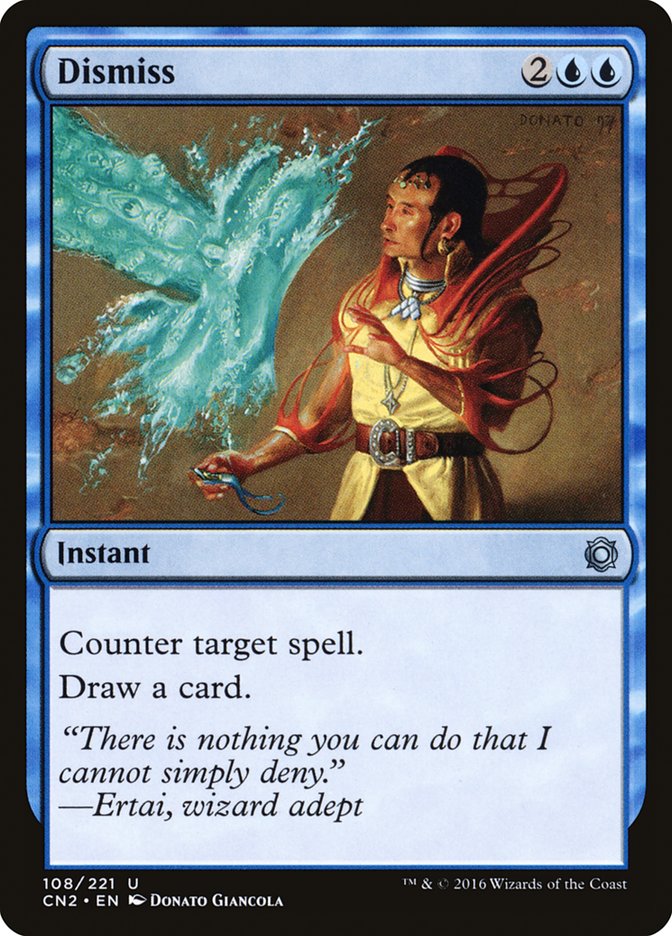
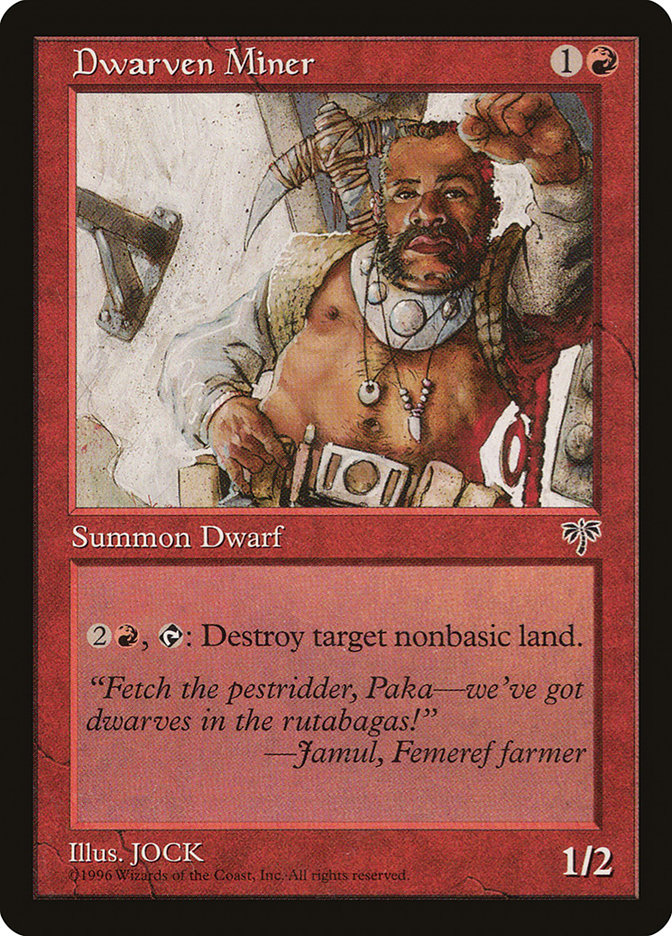
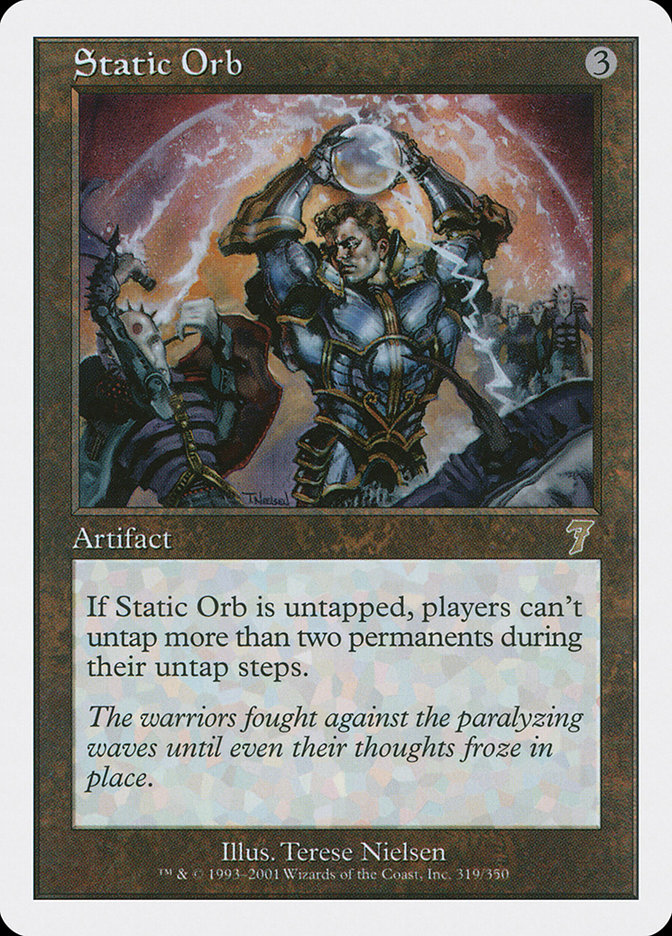
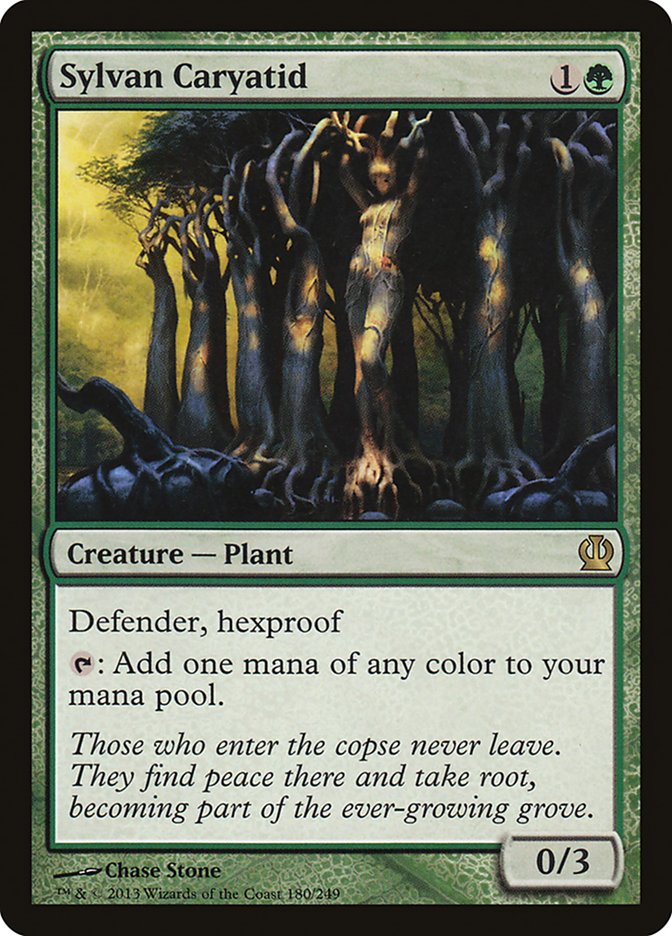
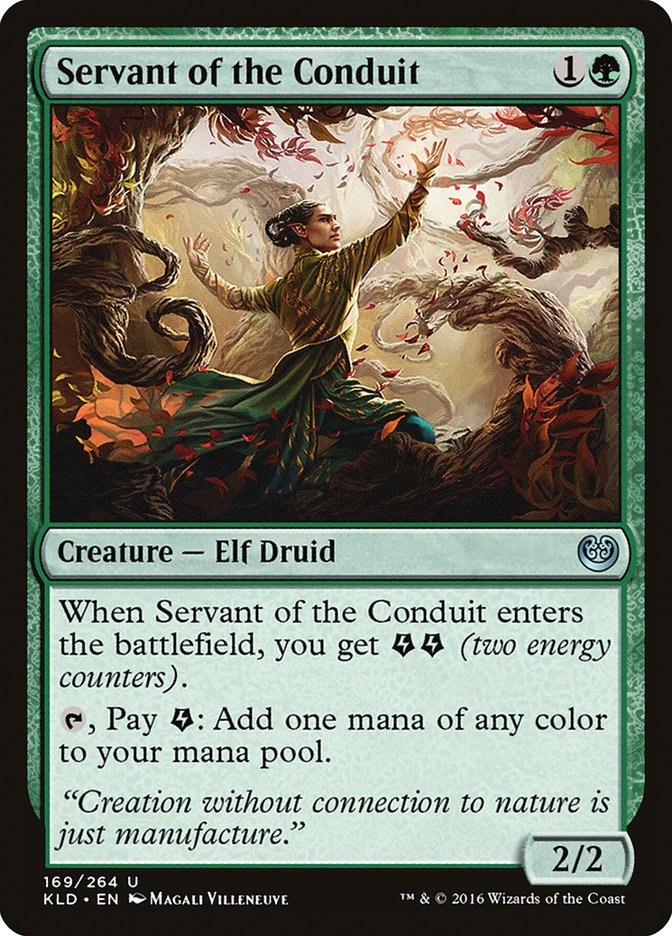

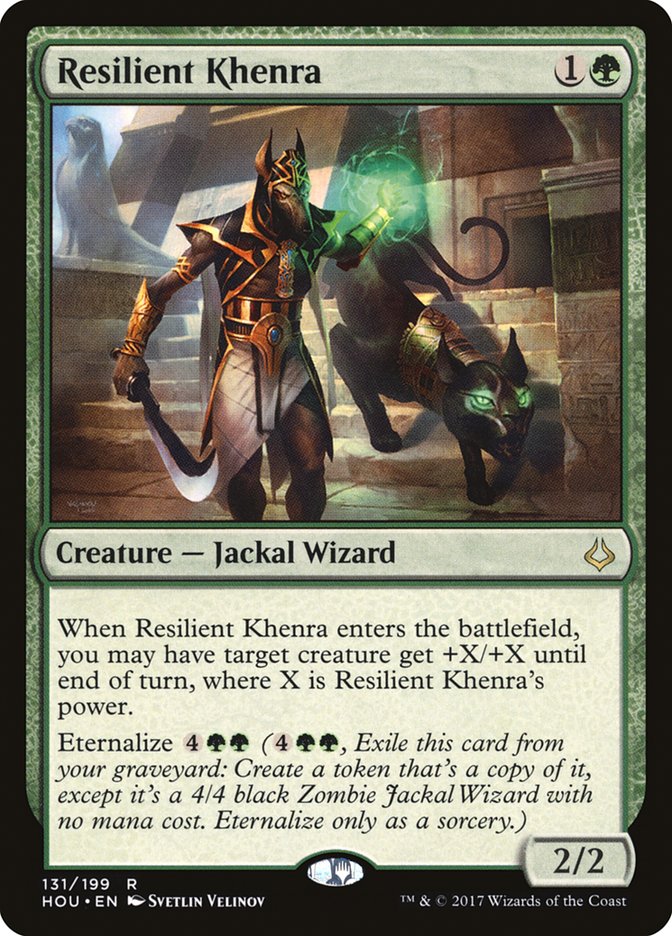
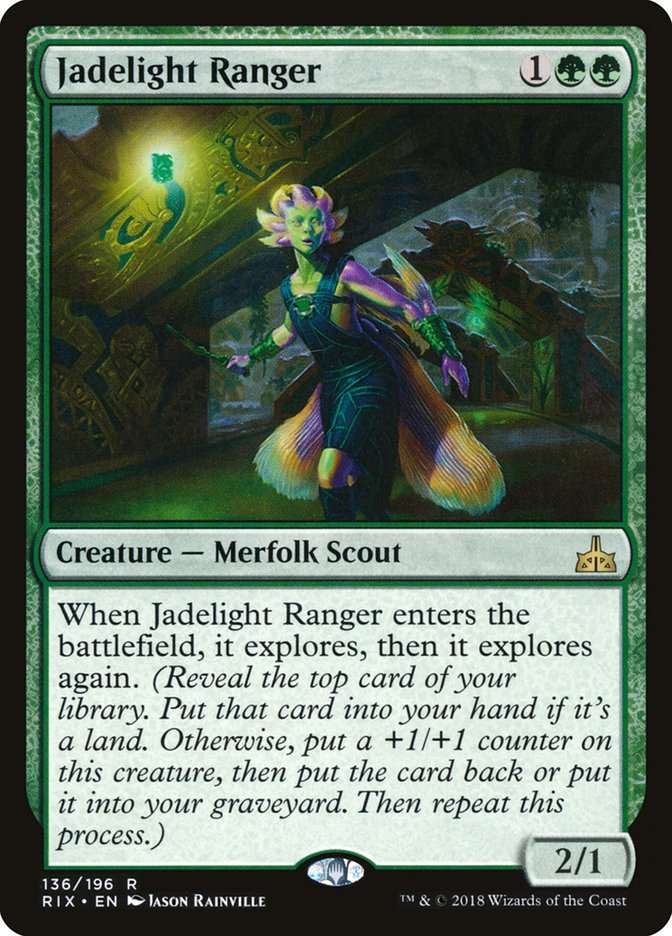 [/card]
[/card]